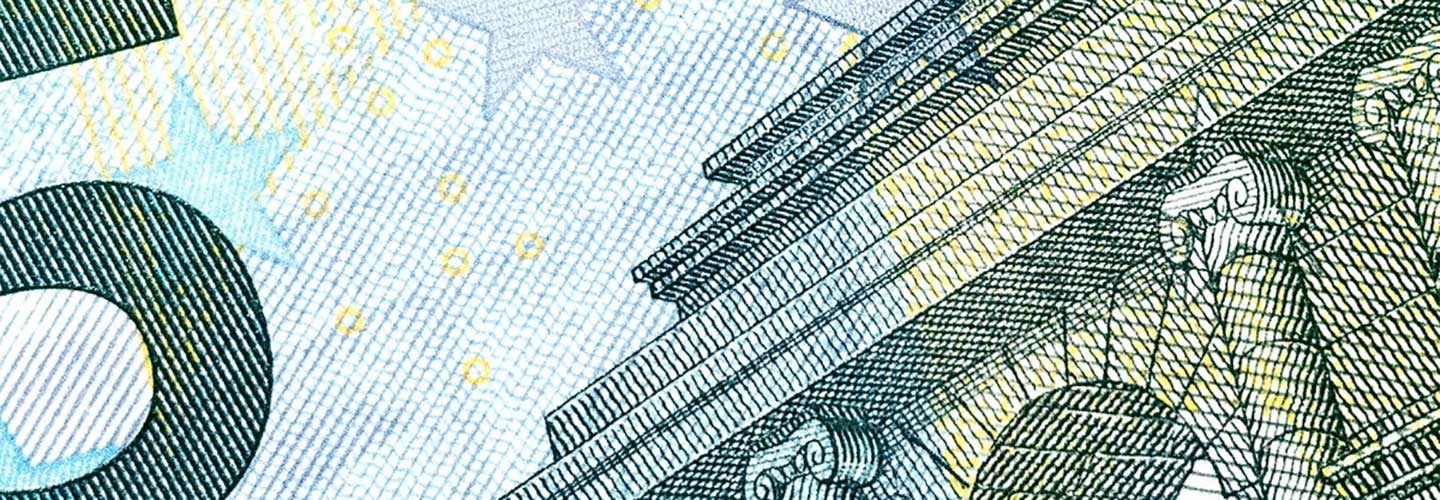Homepage > Uncategorized > Does money make us happy: the correlations between income & subjective well-being
Does money make us happy: the correlations between income & subjective well-being


By Jody Delichte
Subjective well-being (SWB) reflects individuals’ thoughts and feelings of their own life experiences. It combines cognitive judgements and affective reactions in a measurement that includes positive affect, negative affect and life satisfaction (Diener, 1984; Diener, Suh, Lucas, & Smith, 1999; Myers & Diener, 1995). SWB is important to the study of positive psychology as according to Seligman (2003) the desired outcomes of positive psychology are happiness and well-being.
It has been argued that SWB is just a measure of hedonism and is missing meaning and purpose, therefore only measuring part of what makes up the good life (King & Napa, 1998; McGregor & Little, 1998; Ryff & Keyes, 1995).
This paper will not pick apart SWB as a measure of the good life, but instead focus specifically on correlates and predictors of SWB, in particular income, using the widely accepted definition of SWB outlined above.
The relationship between income and well-being has long been explored by philosophers and writers such as Rousseau who included a good bank account as a source of happiness, Democritus who said a happy life does not depend on good fortune, and the Cyrenaics who highlighted that one cannot be rich if their desires for money cannot be met (Diener, 1984).
The income-SWB relationship has since become a focus of empirical study and the topic of much debate. This paper will compare varying studies on income and SWB as they relate across countries and within countries, as well as examine the main theories that attempt to explain the study outcomes, particularly social comparison, adaptation and goal theories.
As many studies use terms such as happiness, satisfaction, and well-being interchangeably with SWB, this paper will also use such terms synonymously.
Income and Subjective Well-Being across Countries
Numerous studies have explored the question of whether people in rich countries are happier than people in poor countries, and three dominant perspectives have emerged:
- The first is that the relationship between income and well-being is weak at best (Easterlin, 1974).
- The second is that there is a positive relationship, but it tapers off or ceases to exist once a certain level of income is reached (Myers, 2000; Veenhoven, 1991).
- The third perspective is that the relationship is positive and linear (Deaton, 2008; Diener, Diener, & Diener, 1995; Diener, Sandvik, Seidlitz, & Diener, 1993; Stevenson & Wolfers, 2008).
The table in Appendix 1 summarises the studies highlighting these three perspectives, as well as additional studies that demonstrated a strong, positive relationship between income and well-being across countries, but where patterns were not shown.
Collectively, the studies show there is a significant positive relationship between income and well-being across countries (average correlation 0.63). The question is therefore not whether the relationship exists, but whether it diminishes at higher income levels or remains strong and significant.
An analysis of the studies shows that the number of countries included does not explain different patterns, although it does influence study robustness. While measures of happiness and satisfaction differ slightly, the difference between the two also does not explain differing patterns, nor does the use of GNP versus GDP.
The most significant difference is the use of the logarithm of GDP (Stevenson & Wolfers, 2008) as opposed to absolute GDP. In all cases using the logarithm of GDP resulted in a positive linear income-well-being relationship across all countries. The questions are therefore why the difference exists and which scale is most valid, which are examined in more detail at the end of this paper.
At this point what can be concluded is that overall people in rich countries are happier than people in poor countries, and that among the wealthy countries the magnitude of the difference is yet uncertain.
National Income Growth and Subjective Well-Being
If people in rich countries are happier than people in poor countries, one would assume that the income growth of a country would increase average SWB. However, a number of studies have concluded that as the income of a country increases, happiness does not necessarily follow suit (Diener et al., 1999; Easterlin, 1974; Easterlin 2005; Myers, 2000), thus creating a wealth-happiness paradox.
One study even suggested that rapid economic growth may be inversely correlated with happiness (Diener et al., 1993). Veenhoven (1991) argued that the relationship depends on the wealth of the country, and in particular the starting point prior to growth.
A recent study has argued against a wealth-happiness paradox stating that using GDP to measure wealth is inaccurate and that household income, male income and average wages are more valid measures that demonstrate the paradox does not exist (Fischer, 2008). However, it should be noted that this analysis was preliminary and only included the United States .
In other studies, Bjørnskov , Gupta and Pedersen (2008) agreed that GDP growth does not affect well-being, but argued that accelerated growth does increase well-being, whereas Stevenson and Wolfers (2008) again used the logarithm of GDP to contradict Veenhoven’s conclusion, demonstrating a positive linear relationship across most countries.
These studies used different countries, sample sizes, types of respondents (e.g. college students versus adults), and measures to provide varying arguments. While most of the evidence points towards a weak relationship between national income growth and SWB, particularly in wealthy countries, recent studies have started to provide new perspectives into the relationship.
In order to provide more concrete conclusions an analysis to determine the most valid measures is required, followed by a longitudinal study across a large number of varied countries using representative samples.

Income and Subjective Well-Being within Countries
To gain a better understanding of the relationship between income and SWB it is necessary to examine the relationship on an individual level. Numerous studies have explored the question of whether rich people are happier than poor people within a country, and many of them concur that there is a significant correlation between income and SWB within countries (Diener and Biswas-Diener, 2002; Diener et al., 1993; Diener et al., 1999; Easterlin, 1974; Stevenson & Wolfers, 2008).
However, whereas Easterlin (1974) concluded that the correlation is strong and even perhaps causal, many others such as Diener and Biswas-Diener (2002) and Diener et al. (1999) concluded that it is significant, but small, particularly when controlled for variables such as unemployment and education (Diener & Biswas-Diener, 2002). However, Diener (1984) and Easterlin (2005) have argued that some control variables impact well-being through their relationship with income.
One of the impacting variables is the wealth of the country. Veenhoven (1991) concluded that the difference between rich people and poor people is larger in poor countries and smaller in wealthy countries, which has been supported by a number of studies (Diener & Biswas-Diener, 2002).
Veenhoven (1991) also concluded that there is diminishing marginal utility of money within a country, which has been supported by subsequent studies (Diener et al., 1993; Myers, 2000; Myers & Diener, 1995). However, while the impact on SWB may be diminishing at higher levels of income, it does not cease to exist.
Therefore, there is a continued effect on happiness beyond the point where basic needs are met. For example, looking specifically at individuals in a wealthy country, Diener, Horwitz and Emmons surveyed the Forbes 100 wealthiest Americans and found the majority were only slightly happier than the average American, but happier none-the-less (as cited in Myers, 2000, p. 59).
Opponents of the diminishing marginal utility of money theory include Stevenson and Wolfers (2008) who again used the logarithm of income to depict a positive linear relationship between income and well-being within a country, and Easterlin (2005) who argued that the generalisation is based on one point in time and does not control for other possible variables.
Easterlin used a single example of the United States to demonstrate that over time, within a country, as income grows there is zero marginal utility, demonstrating that the relationship between income and SWB is not curvilinear or linear, but flat.
It can therefore be concluded that within a country at a point in time, rich people are happier than poor people, although the magnitude of the difference may be impacted by the wealth of the country and other variables, as well as the measurement used. However, there is question as to the nature of the relationship as income grows.
Individual Income Growth and Subjective Well-Being
Given that rich people are happier than poor people it would be assumed that an increase in individual income would be associated with an increase in SWB. However, similar to Easterlin’s study (2005), a number of studies found that when personal income increases over time happiness does not follow suit (Diener, 1984; Diener & Biswas-Diener, 2002; Diener et al., 1993; Myers, 2000; Myers & Diener, 1995), even in the case of a sudden increase in income through a lottery windfall (Brickman, Coates, & Janoff-Bulman, 1978).
There are however contradicting studies such as Stevenson and Wolfers (2008), who again used the logarithm of income to demonstrate a linear relationship between income growth and SWB and Gardner and Oswald (2001), who demonstrated that financial windfalls such as inheritances and lottery wins are followed by decreased stress and increased happiness.
Whereas the Brickman et al. (1978) study was based on a small sample at a single point in time, the study by Gardner and Oswald (2001) was longitudinal with a larger sample, therefore providing stronger evidence in support of a positive financial windfall-SWB relationship. However, the positive relationship found by Gardner and Oswald (2001) was demonstrated in the year following the windfall, and therefore the question remains as to the long-term impact on well-being.
Thus, while rich people are happier than poor people, there is question as to whether income growth increases SWB, although this may vary depending on whether one works for the income increase or attains it through an unexpected windfall. However, in either case, the long-term effects are uncertain and additional longitudinal studies are therefore required. Analysis on the logarithm of income versus absolute income also needs to be conducted to determine which is more valid, which will be examined at the end of this paper.
The Impact of Social Comparison on the Income-SWB Relationship
It seems counter-intuitive that if rich people are happier than poor people, happiness would not increase with income growth. Easterlin (1974) argued that this paradox exists because it is not absolute income that matters, but relative income, and thus social comparison. Easterlin’s theory is supported by studies that demonstrated unequal income distribution within a community leads to lower SWB (Hagerty, 2000; Morawetz et al., 1977).
It has also been argued that social comparison impacts the income-SWB relationship across countries, as people compare standards in their country with those of other countries ( Bjørnskov et al., 2008; Deaton, 2008).
Veenhoven (1991) argued against the social comparison theory concluding that SWB does not increase with income growth due to diminishing marginal utility of money beyond the fulfilment of basic needs. Additional studies have found little or no evidence for the impact of social comparison on SWB within countries (Diener at al., 1995; Diener et al., 1993) including no evidence of the correlation between the positive skew of income and SWB (Diener et al., 1995). However, Diener et al. (1995) did find evidence of social comparison across countries.
An analysis to determine what may account for the varying conclusions demonstrates that sample size and the number and range of countries may impact the results. For example, Hagerty (2000) studied 8 developed nations over a period of 25 years and found effects of social comparison within a country, whereas Diener et al. (1995) studied a large sample across 55 nations of varying levels of development and concluded the opposite.
However, before concluding that the larger and more varied sample study is most valid, additional analysis of how the studies differ is required, including how social comparisons are implied. In most cases the studies measured assumed social comparisons as opposed to stated social comparisons. Therefore, in order to prove the effect or non-effect of social comparison on the income-SWB relationship, additional studies are required that elicit information on actual social comparisons.
The Impact of Adaptation on the Income-SWB Relationship
Another theory used to explain minimal changes in SWB with increasing income is adaptation. A number of studies have argued that although changes in circumstances such as income can have a temporary impact on SWB, people will inevitably adapt and return to a well-being set point ( Bjørnskov et al., 2008; Brickman et al., 1978; Diener et al., 1999). However, other studies found that people adapt to some things more slowly than others, and in some cases not at all (Diener et al., 1999; Frank, 2004).
Diener at al. (1995) agreed that adaptation has an effect, but argued that it does not account for the entire explanation. Therefore, other factors may be involved such as negative impacts of increased income (e.g. strained social relationships). Diener et al. (1995) also concluded that some changes may persist and therefore continue to impact SWB. Thus, it may be that increased income provides access to resources that have an enduring impact on one’s life and therefore on SWB.
It can therefore be concluded that adaptation has some impact on the income growth-SWB relationship, but that its impact may depend on the situation, other factors involved and the use of income.
How Monetary Goals and Spending Impact Subjective Well-Being
Cognitive behavioural psychologists have argued that the setting, pursuit and attainment of goals increases SWB (Emmons, 1986; Kasser & Ryan, 1993; Nickerson, Schwarz, Diener, & Kahneman, 2003). Specifically with respect to income, Diener et al. (1999) hypothesised that income contributes more to the SWB of individuals who have goals in this area.
Other research has argued against the generalisation that striving for and attaining any goal increases SWB. For example, Diener and Fujita (1995) argued that the goal must be realistic and one must have the resources to attain it, and Kasser and Ryan (1993) argued that the content of the goal matters and extrinsic goals, such as those related to income and materialism decrease SWB.
Srivastava, Locke, and Bartol (2001) have argued that Kasser and Ryan’s (1993) conclusions are limited because they only look at the content of the goals and not the motives behind them. Srivastava et al. (2001) found no negative relationship between money aspiration and SWB and no direct relationship between money importance and SWB. What they found is that negative motives such as social comparison and overcoming self-doubt produce a negative effect, whereas positive motives such as security and family support have no significant effect.
In another study, Nickerson et al. (2003) agreed with Kasser and Ryan’s (1993) conclusion that there is a negative impact of financial goals on SWB, but found that the negative impact diminishes as income increases, except in the domain of family life.
Further, studies have demonstrated that how people spend their money is at least as important as how much money they make. For example, Frank (2004) concluded that using an increase in income to purchase inconspicuous goods, such as those that reduce one’s commute can increase SWB, and Dunn, Aknin, and Norton (2008) demonstrated that whereas personal spending is unrelated to happiness, pro-social spending is associated with significantly greater happiness.
Therefore, it can be concluded that if one has a realistic goal with respect to income for positive motives, has the resources to achieve it and succeeds in doing so, and uses the money for inconspicuous goods or pro-social spending, they will be happier, although possibly not in the domain of family life.

A Brief Examination of Linear versus Linear-Log Functional Forms
Stevenson and Wolfers (2008) used the logarithm of income to demonstrate a positive linear relationship between income and SWB across countries, within countries and with respect to income growth, demonstrating that there is no income-SWB paradox.
Using a log income scale depicts a different relationship pattern than a linear income scale because with the log scale income increases by the same percentage throughout, whereas with the linear scale income increases by the same absolute amount, but by a decreasing percentage.
This is demonstrated, for example, in Stevenson and Wolfers’ (2008) comparison on the relationship between happiness and family income where log income increases by 100% throughout and shows a linear relationship, and linear income increases by 40 throughout, but the percentage change decreases (100%, 50%, 33%, etc.) and shows a curvilinear relationship (Figure 8).
The question therefore is which scale is most accurate in defining the income-SWB relationship. It could be assumed that a linear relationship is most accurate as it depicts more realistic income growth, however, it is questionable whether the declining percentage growth of the linear scale forces a curvilinear effect of the graph, thus creating the effect of diminished marginal utility of income. Diener and Biswas-Diener (2002) have argued that the logarithm of income simply hides the curvilinear effect because the income categories increase in a non-linear manner.
Thus, the next step in the research is to determine which functional form is most valid. One way to do this is by testing the linear and linear-log alternatives against an extended Box-Cox regression model using the Lagrange multiplier approach (Davidson & MacKinnon, 1985; Godfrey & Wickens, 1981).
Conclusion
Based on the analysis of existing studies on the relationship between income and SWB it is concluded that there is a significant positive relationship both across countries and within countries. However, there is question about whether this relationship holds true with respect to income growth. In order to develop more concrete conclusions on the income growth-SWB relationship, additional analysis is required to determine the most valid functional form and more robust longitudinal studies need to be undertaken.
Social comparison and adaptation theories have been used to explain the income-SWB paradox, and while the adaptation theory has ample support, the evidence for social comparison is conflicting and requires more research that specifically identifies what comparisons are actually being made, if any. There is also evidence demonstrating that goals, motives, and goal attainment impact SWB, as do spending choices.
Therefore, in order to maximise happiness with respect to income, it can be concluded that one should live in a wealthy country, be one of the wealthier people within that country, set realistic monetary goals based on positive motives that can be achieved, and use money for inconspicuous goods or pro-social spending.
However, it must be noted that while the studies demonstrate correlations between income and SWB, they provide no evidence of a causal relationship. Therefore, it is uncertain as to whether income causes SWB or whether someone who is happier gains more income. Or perhaps it is cyclical where a happier person gains more income, which then makes them happier. Additional research is therefore required to determine the existence and direction of a causal relationship.
Finally, given that SWB is by its definition subjective, it would be useful to conduct additional research using objective measures, such as physiological responses, to gain more unbiased insight into the income-SWB relationship.
References
Bjørnskov , C., Gupta, N. D., & Pedersen, P. J. (2008). Analysing trends in subjective well-being in 15 European countries, 1973-2002. Journal of Happiness Studies, 9, 317-330.
Brickman, P., Coates, D., & Janoff-Bulman, R. (1978). Lottery winners and accident victims: Is happiness relative? Journal of Personality and Social Psychology, 36, 917-927.
Davidson, R., & MacKinnon, J. G. (1985). Testing linear and loglinear regressions against Box-Cox alternatives. Canadian Journal of Economics, 18, 499-517.
Deaton, A. (2008). Worldwide, residents of richer nations more satisfied. Retrieved from http://www.gallup.com/poll/104608/Worldwide-Residents-Richer-Nations-More-Satisfied.aspx
Diener, E. (1984). Subjective well-being. Psychological Bulletin, 95, 542-575.
Diener, E., & Biswas-Diener, R. (2002). Will money increase subjective well-being? A literature review and guide to needed research. Social Indicators Research, 57, 119-169.
Diener, E., Diener, M., & Diener, C. (1995). Factors predicting the subjective well-being of nations. Journal of Personality and Social Psychology, 69, 851-864.
Diener, E., & Fujita, F. (1995). Resources, personal strivings, and subjective well-being: A nomothetic and idiographic approach. Journal of Personality and Social Psychology, 68, 926-935.
Diener, E., Sandvik, E., Seidlitz, L., & Diener, M. (1993). The relationship between income and subjective well-being: Relative or absolute? Social Indicators Research, 28, 195-223.
Diener, E., Suh, E. M., Lucas, R. E., & Smith, H. L. (1999). Subjective well-being: Three decades of progress. Psychological Bulletin, 125, 276-302.
Dunn, E. W., Aknin, L. B., & Norton, M. I. (2008). Spending money on others promotes happiness. Science, 319, 1687-1688.
Easterlin, R. A. (1974). Does economic growth improve the human lot? Some empirical evidence. Retrieved from http://graphics8.nytimes.com/images/2008/04/16/business/ Easterlin1974.pdf
Easterlin, R. A. (2005). Diminishing marginal utility of income? Caveat Emptor. Social Indicators Research, 70, 243-255.
Emmons, R. A. (1986). Personal strivings: An approach to personality and subjective well-being. Journal of Personality and Social Psychology, 51, 1058-1068.
Fischer, C. S. (2008). What wealth-happiness paradox? A short note on the American case. Journal of Happiness Studies, 9, 219-226.
Frank, R. H. (2004). How not to buy happiness. Dædalus, Spring, 69-79.
Gardner, J., Oswald, A. (2001). Does money buy happiness? A longitudinal study using data on windfalls. Retrieved from http://www2.warwick.ac.uk/fac/soc/economics/staff/faculty/oswald/marchwindfallsgo.pdf
Hagerty, M. R. (2000). Social comparison of income in one’s community: Evidence from national surveys of income and happiness. Journal of Personality and Social Psychology, 78, 764-771.
Kasser, T., & Ryan, R. M. (1993). A dark side of the American dream: Correlates of financial success as a central life aspiration. Journal of Personality and Social Psychology, 65, 410-422.
King, L. A., & Napa , C. K. (1998). What makes a life good? Journal of Personality and Social Psychology, 75, 156-165.
McGregor, I. , & Little, B. R. (1998). Personal projects, happiness, and meaning: On doing well and being yourself. Journal of Personality and Social Psychology, 74, 494-512.
Morawetz, D., Atia, E., Bin-Nun, G., Felous, L., Gariplerden, Y., Harris, E., et al. (1977). Income distribution and self-rated happiness: Some empirical evidence. The Economic Journal, 87, 511-522
Myers, D. G. (2000). The funds, friends, and faith of happy people. American Psychologist, 55, 56-67.
Myers, D. G., & Diener, E. (1995). Who is happy? Psychological Science, 6, 10-19.
Nickerson, C., Schwarz, N., Diener, E., & Kahneman, D. (2003). Zeroing in on the dark side of the American dream: A closer look at the negative consequences of the goal for financial success. Psychological Science, 14, 531-536.
Ryff, C. D., & Keyes, C. L. M. (1995). The structure of psychological well-being revisited. Journal of Personality and Social Psychology, 69, 719-727.
Seligman, M. E. P. (2003). Positive psychology: Fundamental assumptions. The Psychologist, 16, 126-127.
Srivastava, A., Locke, E. A., Bartol, K. M. (2001). Money and subjective well-being: It’s not the money, it’s the motives. Journal of Personality and Social Psychology, 80, 959-971.
Stevenson, B., & Wolfers, J. (2008). Economic growth and subjective well-being: Reassessing the Easterlin paradox. Retrieved from http://bpp.wharton.upenn.edu/betseys/papers/ Happiness.pdf
Veenhoven, R. (1991). Is happiness relative? Social Indicators Research, 24, 1-34.
Appendix 1: Results of cross-country income and well-being studies
| Study | n | Income Measure | Well-being measure | Results | Pattern |
| Cantril 1965 | 14 | GNP per capita | Happiness | Correlation = positive | Not shown |
Easterlin 1974
| 14 9 | GNP per capita GNP per capita | Happiness Happiness | Correlation = ambiguous Correlation = ambiguous | Flat line |
| Inkeles & Diamond 1980* | 10 | GDP per capita or PPP | SWB | Correlation = 0.55 – 0.61 | Not shown |
| Ouweneel & Veenhoven 1991* | 28 | GDP per capita or PPP | SWB | Correlation = 0.62 | Not shown |
Veenhoven 1991*
| 14 9 ** | GNP per capita GNP per capita GNP per capita | SWB SWB Happiness | Correlation = 0.51 Correlation = 0.59 Correlation = 0.84 | Curvilinear Curvilinear Curvilinear |
| Diener et al. 1993 | 39 | GNP per capita | SWB | Correlation = 0.46 – 0.50 | Linear |
| Diener at al. 1995 | 55 | GNP and Purchasing Power Parity (PPP) | SWB | Correlation = 0.59 | Linear |
| Myers & Diener 1995 | 24 | GNP per capita | SWB | Correlation = 0.67 | Not shown |
| Diener & Diener 1995 | 34 | GDP per capita or PPP | SWB | Correlation = 0.64 | Not shown |
| Schyns 1998* | 40 | GDP per capita or PPP | SWB | Correlation = 0.64 | Not shown |
| Myers 2000 | 40 | GNP per capita | SWB | Positive correlation, which evaporates among nations with GNP>$8000/person | Curvilinear |
| Inglehart & Klingemann 2000* | 64 | GDP per capita or PPP | SWB | Correlation = 0.70 | Not shown |
| Diener & Oishi 2000* | 42 | GDP per capita or PPP | SWB | Correlation = 0.69 | Not shown |
| Deaton 2008 | 117+ | GDP per capita and PPP | Satisfaction | Correlation = positive and substantial | Linear |
Stevenson & Wolfers 2008
| 4 8 7 12 9 19 35 45 67 44 113 | Log of GDP per capita Log of GDP per capita Log of GDP per capita Log of GDP per capita Log of GDP per capita Log of GDP per capita Log of GDP per capita Log of GDP per capita Log of GDP per capita Log of GDP per capita Log of GDP per capita | Happiness Satisfaction Happiness Satisfaction Happiness Satisfaction Satisfaction Satisfaction Satisfaction Satisfaction Satisfaction | Correlation = 0.93 Correlation = 0.62 Correlation = 0.62 Correlation = 0.48 Correlation = 0.41 Correlation = 0.53 Correlation = 0.71 Correlation = 0.70 Correlation = 0.70 Correlation = 0.55 Correlation = 0.82 | Linear Linear Linear Linear Linear Linear Linear Linear Linear Linear Linear |
* As cited in Diener and Biswas-Diener, 2002, p. 136-138
** Study of regions (not countries)





